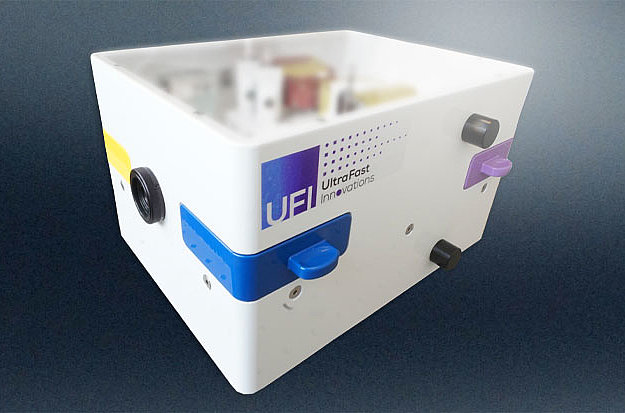
CAPELLA
Light Field Synthesizer

Our Light Field Synthesizer CAPELLA enables synthesis and sub-femtosecond control of super-octave light transients.
A coherent supercontinuum is divided into three distinct bands (channels) using chirped dichroic beamsplitters. Then, through interferometric spatio-temporal superposition, precise field waveform control and synthesis is achieved. All constituent pulses from the channels undergo temporal compression by chirped mirrors, resulting in pulse durations of less than 10 femtoseconds. By introducing varying time-delays among the channels, sub-cycle shaping and control of the field waveform is possible.
The robustness, compact design, and exceptional thermal performance of the light field synthesizer allow it to maintain stable optical path lengths across different channels for extended periods of time. The working principle does not only allow to synthesize any electrical field waveform but also to generate pulses below 2 fs, the shortest ever generated by a commercial device to date.
Key Product Features
- Shortest pulse available: 2 fs FWHM
- Overall transmission
- > 60% @ 9 mm beam
- > 70% @ 7 mm beam
- Parallel pulse compression of multiple channels:
- < 9 fs (700 – 1000 nm)
- < 8 fs (500 – 700 nm)
- < 10 fs (400 – 500 nm)
- Attosecond-scale delay among the channels
- Interferometric stability
- Short term passive stability: < 100 mrad
- Long term active-loop stability: < 50 mrad
- Incident polarization: s and p polarization
- Laptop and user-friendly software interface included
- Small Footprint: 30 x 20 cm²
References
[1] Synthesized Light Transients
A. Wirth, M. Hassan, I. Grguras, J. Gagnon, A. Moulet, T. Luu, S. Pabst, R. Santra, Z. Alahmed, A. Azzeer, V. Yakovlev, V. Pervak, F. Krausz, E. Goulielmakis
Science 334,195 (2011)
[2] Optical attosecond pulses and tracking the nonlinear response of bound electrons
M. Hassan, T. Luu, A. Moulet, O. Razskazovskaya, P. Zhokhov, M. Garg, N. Karpowicz, A. Zheltikov, V. Pervak, F. Krausz, E. Goulielmakis
Nature 530, 66 (2016)